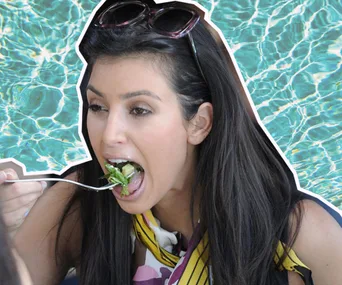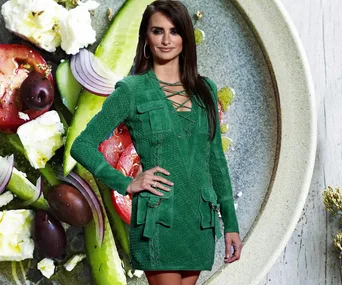By now, you’ve probably heard the chatter about giving up sugar. From friends posting lots of photos of their homemade sugar-free treats on social media to expert panels on TV, everyone seems to have an opinion.
Beyond the hype, making a sugar-related change for weight loss and better health can be achieved says Dr Helena Popovic, author of NeuroSlimming and founder of Winning at Slimming.
With more than two decades’ experience in the science of weight management, Dr Popovic believes the health focus should be on reducing sugar intake, rather than giving it up.
“Sugar is not designed to be a daily snack, and eating one piece of homemade cake is not the problem – feeling that you need a box of chocolates to get you through the day is. Life can be sweeter without too much sugar,” she insists.
The truth about sugar
There are so many different anti-sugar tribes and weight-loss messages that even knowing which foods contain sugar has become confusing. “There are 46 different words for fructose and 17 words for glucose that are used on food labels, and the average person knows about three of them,” Dr Popovic says.
That’s why she likes to start with the basics. “Sugar is a subset of carbohydrates,” she explains. Also known as table sugar and sucrose, cane sugar consists of 50 per cent fructose and 50 per cent glucose. Glucose is the main source of your body’s fuel, while fructose is not used by any organ.
“As soon as glucose is absorbed by your body, it stimulates a release of insulin and – if you overdo it – you may become insulin resistant.”
This can lead to health issues such as metabolic syndrome, pre-diabetes and type 2 diabetes.
What about fructose?
“Fructose does not stimulate the release of insulin, and we used to think of it as the answer to diabetes,” Dr Popovic says. “But what we didn’t know then is when you eat too much fructose – and it’s in just about all processed foods – your body produces visceral fat around your organs.”
Not only does this cause abdominal weight gain, it can affect hormone production. “Fat in and around your organs acts like another organ as it produces hormones and chemicals that increase the risk of cancer and inflammatory disease,” she adds.
Too much fructose can be also be dangerous for your heart. “It raises uric acid levels in your blood, which causes gout and high blood pressure,” Dr Popovic says. “Excess fructose is also converted into the triglycerides that are the main culprit in stroke and cardiovascular disease.”
Constant craving: If you can’t give up chocolate, a dark variety with at least 70 per cent cacao is a lower sugar option.
Recognise the hidden sugar
With so many names for sugar and sugar-like substances in packaged food, it pays to read labels closely. “Have your radar up for anything with fructose, glucose or sucrose,” Dr Popovic warns.
And remember, ingredients are listed from greatest quantity to smallest, so any sign of sugar in the first few items means that particular food is loaded with the white stuff.
Other ingredients to be aware of are rice malt syrup (a fructose-free blend of glucose and maltose) and stevia, on which the jury’s still out.
“Stevia is in a category of its own that hasn’t had enough research,” Dr Popovic says. “At this stage it’s your best bet, but it has to be highly processed to go from a green leaf to a white powder.”
Know your limit
Now you know what to look for, how much sugar is too much? “The World Health Organisation has determined the safe level of daily sugar consumption for adults is six teaspoons,” Dr Popovic says.
“That’s a good starting point for reducing your intake, given that the average Australian eats between 20 and 40 teaspoons of sugar a day.”
The easiest way to cut down on sugar is by looking at the nutritional information on packaged food. “Turn the packet over and look at the sugar content per serving, remembering there’s about 4g of sugar in one teaspoon of sugar,” she suggests.
Watch out for tricks. “If a food is high in sugar, they make the serving size small so you actually have to eat two or three times that amount,”
Dr Popovic says. Once you’re certain how much sugar is in your serving, divide it by four. “If it’s a breakfast cereal it might have 12g of sugar per serving but if you eat double that amount, you’re getting 24g of sugar – that’s six teaspoons of sugar.”
If you’d rather avoid doing the math, Dr Popovic advises quitting soft drink and preparing your own food. “Have a healthy respect for sugar,” she says. “It’s something to be savoured and not just used mindlessly on everything.”
Can I still eat fruit?
Absolutely! “Fruit is the main food that contains fructose, but you can eat as much fruit as you like because it contains such high quantities of water and fibre that you can’t overeat it – unless you want to make yourself sick,” Dr Popovic says.
Just be sure to eat your fruit whole, not juiced or dried, and try thinking of it as “Mother Nature’s lollies”.
“Mango, apples and grapes are all satisfying and very sweet if you pause to enjoy them,” Dr Popovic says. “When you limit the amount of sugar you have, you actually enjoy eating fruit much more.”


